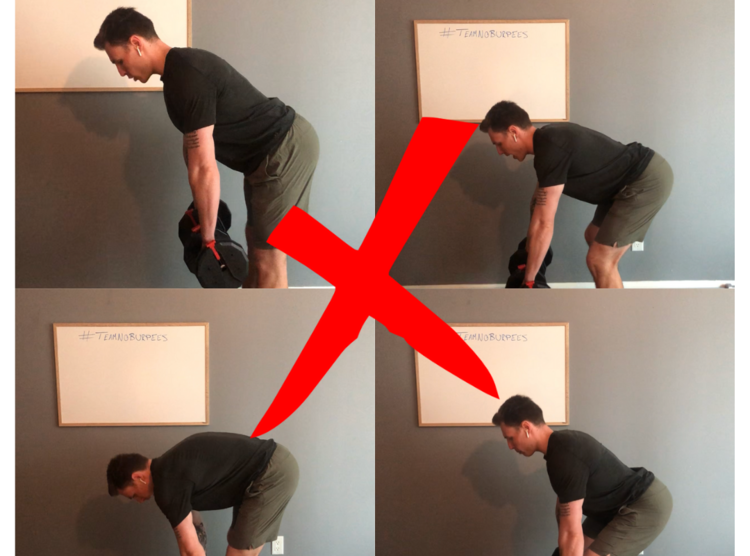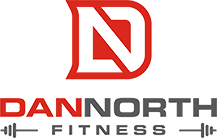
Avoid These 4 RDL Mistakes (And How to Fix Them)
- DAN NORTH
- Deadlift Exercise Technique Glutes and Hamstrings Tips
The RDL or Romanian Deadlift can be one of the most effective ways to develop your glutes, hamstrings, and lower back…as long as it’s performed optimally. I say optimally and not correctly because how you perform the RDL may be slightly different than the way I perform it.
Blanket statements with black and white suggestions rarely work because we all have different bodies and move in our own unique ways. You want to perform the movement or lift in a way that is optimal for you and your body.
With that being said, there are some common mistakes that should be universally avoided with RDL’s and some corrective cues you can implement into this lift to make it better for you and your gains.
1. REACHING FORWARD
The RDL can be classified as a hip-dominant lift because the lift is initiated by the hips, which is commonly forgotten when performing the RDL.
Instead of reaching forward with your arms, start the lift by pushing your hips back.
Remember this: during hinging exercises like the RDL, the further away the weight is from your body, the more stress you’re putting on the spine. Not good.
By pushing your hips back first, you’ll naturally reach down to your ankles as opposed to forward past your feet, which allows you to use your glutes and hamstrings more effectively while keeping your spine in a healthy, stable position.
2. KEEPING YOUR LEGS STRAIGHT
Some refer to the RDL as a stiff-legged deadlift. But don’t let the name fool you, your legs aren’t completely stiff during this lift.
Keeping your legs locked will put a lot of unwanted force and stress on the knees, while greatly reducing the support from the hamstrings (which act as stabilizers of the knee). Not good.
You always want to maintain a slight knee bend during the RDL to support the knees and optimally engage the hamstrings.
3. TOO MUCH KNEE BEND
On that note, you can bend the knees too much during the RDL, treating it as a conventional deadlift or even a squat. This isn’t necessarily bad; you’re just emphasizing the quads by doing this instead of hinging at the hips and targeting the hamstrings/posterior chain.
Your hips travel in a horizontal plane (back and forth) during deadlifts, and a vertical plane (up and down) during squats.
Rather than thinking up and down (during the RDL), think back and forward.
Some useful cues to consider to help you keep a slight knee bend during RDL’s:
- Picture a string attached to your hip, pulling it back and up to the ceiling.
- Another string attached to your chest, pulling it down to the floor.
- Think pushing a car door shut with your butt.
4. ROUNDED UPPER BACK AND SHOULDERS
Your spine has a natural curvature to it, so a slight round towards the upper back isn’t actually as bad as people make it out to be (as long as your lower back is in a strong neutral position with no rounding). The real problem is when the lower back rounds, your core and/or glutes are no longer supporting the spine and your pelvis is excessively rounded posteriorly. This is not good when performing any deadlift variation, which are naturally a very back-dominant lift as it is.
But there can also be excessive internal rotation (rounding) in the shoulders and thoracic spine (upper back). This is usually a result of our first mistake of reaching forward past the feet instead of straight down between the ankles.
You want to maintain upper back engagement and full body tension throughout the entire range of motion during any deadlift. Period. The moment you’re relaxed is the moment you lose spinal integrity. Not good.
A useful cue to consider to keep your upper back engaged and minimize rounding: squeeze a couple of oranges underneath your armpits. Don’t drink it. Just keep squeezing.
BONUS TIP: WEIGHT DISTRIBUTION ON FEET
This isn’t a mistake, it’s more of a consideration for hamstring and glute recruitment.
Compound lifts (like the RDL) recruit multiple muscles at a time. You can tweak compound lifts slightly to emphasize particular muscle groups over others.
For example, the bench press primarily works the triceps, pecs, and shoulders. You can emphasize triceps engagement by reducing your range of motion and performing the bench press laying on the floor.
For the RDL, one small adjustment you can make to emphasize either the glutes or hamstrings is paying attention to how you distribute your weight on your feet.
By pushing your weight back predominantly onto the heels, you’re likely to engage your glutes a little more, and use them to extend the hip forward through the concentric (up) phase of the RDL.
By distributing your weight forward towards the front of your feet, you’re likely to feel more hamstring recruitment.
These are just a couple of many small tweaks you can make to the RDL to suit your training goals.




